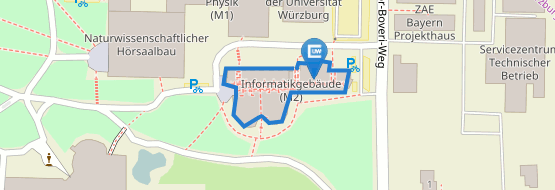ESA Underwater VR
04.12.2023Würzburg computer scientists take a dive -- research study on the use of VR technology in astronaut training concludes. In view of the many possibilities that swimming pools offer for the training of divers or astronauts, a group of researchers led by Prof. Andreas Nüchter has investigated the use of virtual reality (VR) in astronautics.
Astronauts are prepared for their mission on the International Space Station (ISS) at NASA's Neutral Buoyancy Laboratory in Houston, Texas. The ISS has been recreated in the world's largest indoor swimming pool, where astronauts train for their missions. However, we believe that the need for huge swimming pools for astronaut training could possibly be met by an innovative VR solution. The simulation of space equipment in virtl reality should make large swimming pools superfluous. To this end, the we combined diving goggles with a VR headset to simulate a realistic space environment in a study funded by the European Space Agency (ESA).
The main objective of this research was to develop a waterproof VR headset that meets the requirements of an underwater environment. Tracking systems play a crucial role, as they enable precise determination of position and orientation in space. We believe that the combination of innovative VR technologies and precise tracking systems has the potential to revolutionize traditional astronaut training. Prof. Nüchter raves about the experience of floating weightlessly around the planned space station orbiting the moon in the university's own swimming pool. This groundbreaking research could pave the way for more effective, cheaper and more versatile methods of space training. After the system was presented at the ESA AR/VR conference at ESTEC in Noordwijk, NL, in December, we are now looking forward to testing it in the Neutral Buoyancy Facility (NBF) at the ESA Astronaut Center in Cologne.








